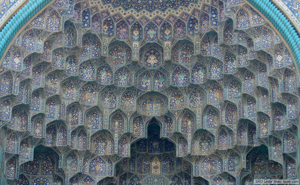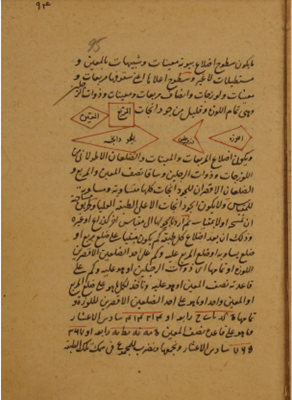Extracting Toponyms from Maps of Jerusalem: Difference between revisions
Jump to navigation
Jump to search
| Line 42: | Line 42: | ||
| | | | ||
* Choose three interesting project ideas. | * Choose three interesting project ideas. | ||
| align="center" | ✓ | | align="center" | ✓ | ||
|- | |- | ||
| Line 55: | Line 54: | ||
| | | | ||
* Rhino and Grasshopper applied exercises. | * Rhino and Grasshopper applied exercises. | ||
| align="center" | ✓ | | align="center" | ✓ | ||
|- | |- | ||
| Line 62: | Line 60: | ||
| | | | ||
* Grasshopper implementation of Islamic 2D star pattern | * Grasshopper implementation of Islamic 2D star pattern | ||
| align="center" | ✓ | | align="center" | ✓ | ||
|- | |- | ||
| Line 75: | Line 72: | ||
| | | | ||
* Understand the construction methods described by Al Kashi's manuscript "Methods of the masons'. | * Understand the construction methods described by Al Kashi's manuscript "Methods of the masons'. | ||
| align="center" |✓ | | align="center" |✓ | ||
|- | |- | ||
| Line 85: | Line 78: | ||
| | | | ||
* Work on the grasshopper 3D model. | * Work on the grasshopper 3D model. | ||
| align="center" |✓ | | align="center" |✓ | ||
| Line 94: | Line 85: | ||
| | | | ||
* Midterm presentation: Prepare slides for the midterm project presentation. | * Midterm presentation: Prepare slides for the midterm project presentation. | ||
| align="center" |✓ | | align="center" |✓ | ||
|- | |- | ||
| Line 101: | Line 91: | ||
| | | | ||
* Complete the parametric 2D plan on Grasshopper. | * Complete the parametric 2D plan on Grasshopper. | ||
| align="center" | ✓ | | align="center" | ✓ | ||
|- | |- | ||
| Line 109: | Line 97: | ||
| | | | ||
* Start applying the 3D shapes on the 2D plan of the model. | * Start applying the 3D shapes on the 2D plan of the model. | ||
| align="center" | ✓ | | align="center" | ✓ | ||
|- | |- | ||
| Line 117: | Line 103: | ||
| | | | ||
* Final changes and fine tuning of the model. | * Final changes and fine tuning of the model. | ||
| align="center" | ✓ | | align="center" | ✓ | ||
Revision as of 13:07, 5 December 2023
Introduction & Motivation
Muqarnas Definition
Muqarnas elements
Muqarnas Types
1. Simple Muqarnas: the ceilings have plane surfaces only
| [[]] |
Methodology
Create the shapes in 2D
Transform the shapes in 3D
The Arc from the Method of Masons
The 3D Projection
Create the 2D plan and the 3D volume
- Step 1:
- Step 2:
In practice
Project Plan
| Date | Task | Completion |
|---|---|---|
| By Week 3 |
|
✓ |
| By Week 4 |
|
✓ |
| By Week 5 |
|
✓ |
| By Week 6 |
|
✓ |
| By Week 7 |
|
✓ |
| By Week 8 |
|
✓ |
| By Week 9 |
|
✓ |
| By Week 10 |
|
✓ |
| By Week 11 |
|
✓ |
| By Week 12 |
|
✓ |
| By Week 13 |
|
✓ |
| By Week 14 |
|
✓ |
Results
3D shapes
Limitations
Future work
Github Repository
References
Literature
- Kim, Jina, et al. "The mapKurator System: A Complete Pipeline for Extracting and Linking Text from Historical Maps." arXiv preprint arXiv:2306.17059 (2023).
- Li, Zekun, et al. "An automatic approach for generating rich, linked geo-metadata from historical map images." Proceedings of the 26th ACM SIGKDD International Conference on Knowledge Discovery & Data Mining. 2020

